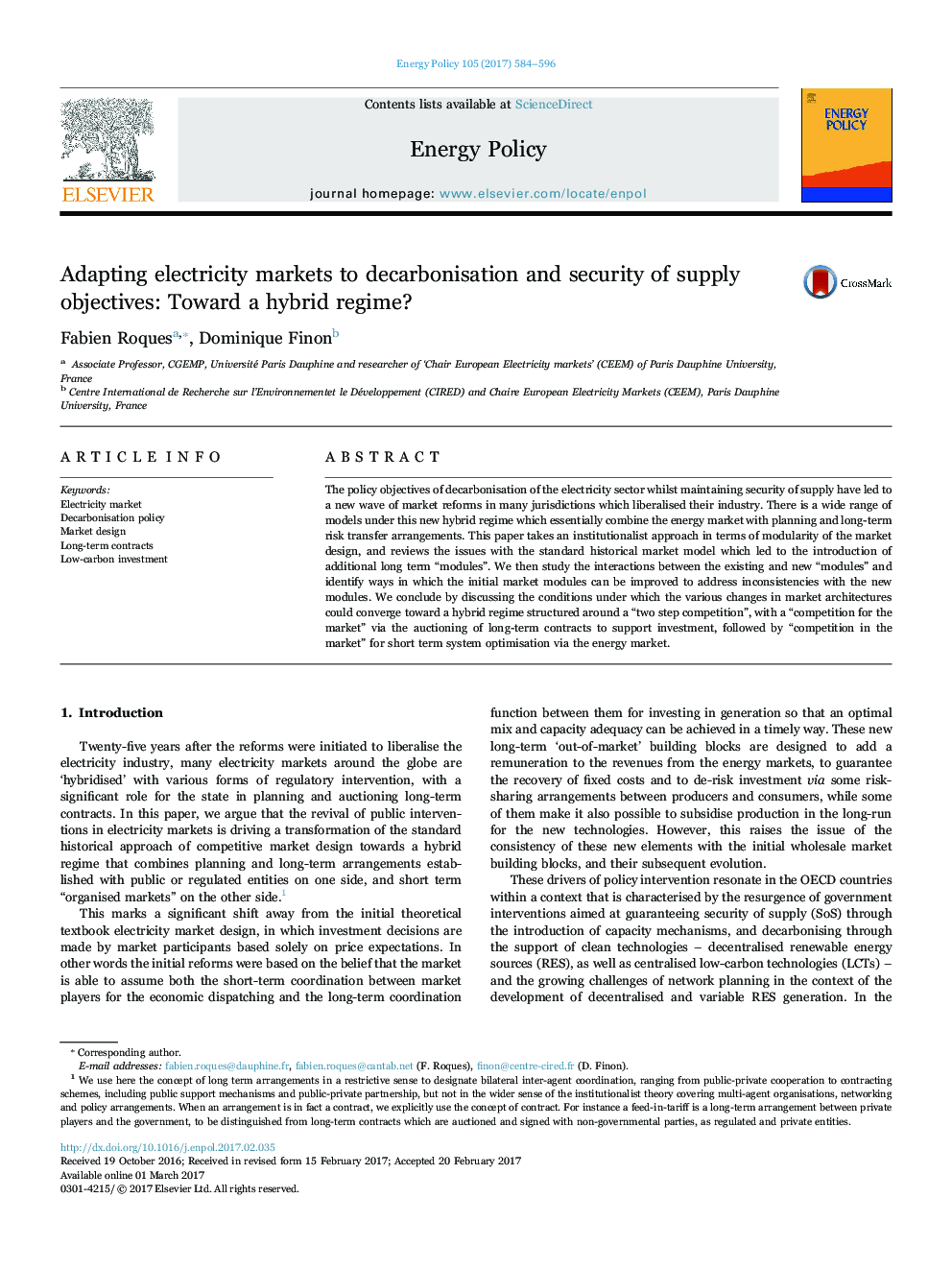| Article ID | Journal | Published Year | Pages | File Type |
|---|---|---|---|---|
| 5105926 | Energy Policy | 2017 | 13 Pages |
Abstract
The policy objectives of decarbonisation of the electricity sector whilst maintaining security of supply have led to a new wave of market reforms in many jurisdictions which liberalised their industry. There is a wide range of models under this new hybrid regime which essentially combine the energy market with planning and long-term risk transfer arrangements. This paper takes an institutionalist approach in terms of modularity of the market design, and reviews the issues with the standard historical market model which led to the introduction of additional long term “modules”. We then study the interactions between the existing and new “modules” and identify ways in which the initial market modules can be improved to address inconsistencies with the new modules. We conclude by discussing the conditions under which the various changes in market architectures could converge toward a hybrid regime structured around a “two step competition”, with a “competition for the market” via the auctioning of long-term contracts to support investment, followed by “competition in the market” for short term system optimisation via the energy market.
Related Topics
Physical Sciences and Engineering
Energy
Energy Engineering and Power Technology
Authors
Fabien Roques, Dominique Finon,
